Alternative Energy Sources: Technology Overview
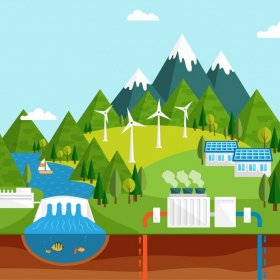
Even schoolchildren know that the reserves of oil, gas and coal are not infinite. Energy prices are constantly rising, forcing payers to sigh heavily and think about increasing their own income. Despite the achievements of civilization, outside the cities there are many places where gas is not supplied, and in some places there is not even electricity. In the same place where such an opportunity exists, the cost of installing the system sometimes sometimes does not correspond to the income level of the population. It is not surprising that do-it-yourself alternative energy is of interest today to both the owners of large and small country houses, and the townspeople.
The whole world around us is full of energy, which is contained not only in the bowels of the earth. At school, at geography lessons, we learned that it is possible to use with high efficiency the energy of wind, sun, tides, falling water, the earth’s core and other similar energy carriers on the scale of entire countries and continents. However use alternative energy sources it is possible for heating a separate house.
Content
Types of Alternative Energy Sources
Among the options for natural sources of private energy supply should be noted:
- solar panels;
- solar collectors;
- heat pumps;
- wind generators;
- installations for the absorption of water energy;
- biogas plants.
With sufficient funds, you can buy a ready-made model of one of these devices and order its installation. Responding to the wishes of consumers, industrialists have long mastered the manufacture of solar panels, heat pumps, etc. However, their cost remains stably high. Such devices can be done on their own, saving some money, but spending more time and effort.
Video: what natural energy can be used
The principle of operation and the use of solar panels in a private house
The physical phenomenon on which the principle of operation of this energy source is based is the photoelectric effect. Sunlight, falling on its surface, releases electrons, which creates an excess charge inside the panel. If you connect a battery to it, then thanks to the lightning in the number of charges in the circuit, current will appear.
Designs capable of capturing and converting the energy of the sun are numerous, varied and constantly improving.For many folk craftsmen, improving these useful designs has become an excellent hobby. At thematic exhibitions, such enthusiasts willingly demonstrate many useful ideas.
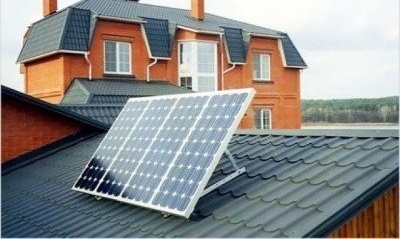
To make solar panels, it is necessary to purchase single-crystal or polycrystalline photocells, place them in a transparent frame, which is fixed with a strong case
The basis solar cell - special crystals that capture energy. At home, such elements cannot be made, they will have to be purchased. The crystals are very fragile, they must be handled with care. To make a solar battery, you must:
- Make a frame for solar panels from a transparent material, such as plexiglass.
- Make a case from a metal corner, plywood, etc.
- Gently solder the crystalline elements into the circuit.
- Place the photocells in the frame.
- Install housing.
In general, there are two types of solar cells: monocrystalline and polycrystalline. The former are more durable and have an efficiency of about 13%, while the latter fail faster, their efficiency is slightly lower - less than 9%. However, single-crystal photocells work well only with a stable flow of solar energy, on a cloudy day their efficiency becomes much lower. But polycrystalline elements carry the vagaries of the weather much better.
The resulting electricity can be used to power household appliances or to heat a room using underfloor heating technology. But the energy of the sun is not only suitable for generating electrical energy. Using solar energy, you can heat water. About this in the next section of the article. So, the advantages of this energy source:
- inexhaustibility;
- the absence of any waste or noise in the process of energy production;
- autonomy;
- relatively cheap maintenance;
- progressiveness;
The disadvantages of this technology are as follows:
- the high cost of the panels themselves and commissioning;
- slight pollution of the planet with emissions from production;
- expensive batteries;
- low efficiency of the panels, and, as a consequence, the need for a large number of them.
Detailed instructions for the manufacture of solar panels in our next material:https://aquatech.tomathouse.com/en/otoplenie/alt_otoplenie/solnechnaya-batareya-svoimi-rukami.html
Video: DIY solar cell manufacturing
Finished batteries are placed, of course, on the sunniest side of the roof. In this case, it should be possible to adjust the inclination of the panel. For example, during snowfalls, panels should be placed almost vertically, otherwise a layer of snow may interfere with battery operation or even damage them.
Design and use of solar collectors
The primitive solar collector is a black metal plate placed under a thin layer of transparent liquid. As you know from the school physics course, dark objects heat up more than light ones. This fluid moves with the help of a pump, cools the plate and heats up at the same time. The heated liquid circuit can be placed in a tank connected to a source of cold water. By heating the water in the tank, the fluid from the collector cools. And then he comes back. Thus, this power system allows you to get a constant source of hot water, and in winter also hot radiators.
Today, there are 3 types of such devices:
- air;
- tubular;
- flat.
Aerial
Air collectors are black plates covered with glass or transparent plastic. Around these plates, air circulates naturally or forcibly. Warm air is used to heat rooms in the house or to dry clothes.
The advantage is the extreme simplicity of design and low cost. The only drawback is the use of forced air circulation. But you can do without it.
Tubular
Tubular collectors are in the form of several aligned in a series of glass tubes coated from the inside with light-absorbing material. They are connected to a common collector and fluid circulates through them. Such collectors have 2 ways of transmitting the received energy: direct and indirect. The first method is used in the winter. The second is applied year-round. There is a variation using vacuum tubes: one is inserted into the other and a vacuum is created between them.
This isolates them from the environment and better retains the heat received. Advantages are simplicity and reliability. The disadvantages include the high cost of installation.
Flat
Flat collector is the most common type. It was he who served as an example to explain the principle of operation of these devices. The advantage of this variety is simplicity and cheapness in comparison with others. The disadvantage is significant heat loss than other subtypes do not suffer.
To improve existing solar systems, engineers have proposed using a kind of mirror called hubs. They allow you to raise the temperature of water from standard 120 to 200 ° C. This subspecies of collectors is called concentration. This is one of the most expensive options, which, of course, is a drawback.
Complete instructions for manufacturing the installation of a solar collector in our next article:https://aquatech.tomathouse.com/en/otoplenie/boilery/solnechnyiy-vodonagrevatel-svoimi-rukami.html
Using wind power
If the wind is capable of driving flocks of clouds, why not use its energy for other useful things? The search for an answer to this question led engineers to create a wind generator. This device usually consists of:
- generator;
- high tower;
- blades that rotate, catching the wind;
- batteries
- electronic control systems.
The principle of operation of the wind generator is quite simple. The blades, rotating from strong winds, rotate the transmission shafts (in common people - the gearbox). They are connected to an alternator. The transmission and generator are located in a cradle or, in another way, a gondola. It may have a swivel mechanism. The generator is connected to the control automatics and the step-up voltage transformer. After the transformer, the voltage that has increased its value is given to the general power supply system.
Since the issues of creating wind generators have been studied for a long time, there are projects of the most diverse designs of these devices. Models with a horizontal axis of rotation occupy a fairly large space, but wind generators with a vertical axis of rotation are much more compact. Of course, for the effective operation of the device requires a sufficiently strong wind.
Advantages:
- lack of emissions;
- autonomy;
- use of one of the renewable resources;
Disadvantages:
- the need for constancy of the wind;
- high starting price;
- rotation noise and electromagnetic radiation;
- occupy large areas.
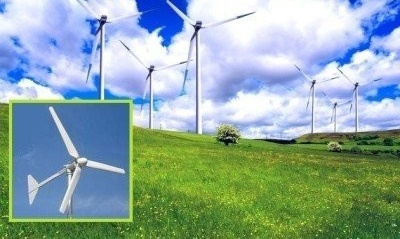
The wind generator must be placed as high as possible so that its operation is efficient. Models that have a vertical axis of rotation are more compact than with horizontal rotation
A step-by-step guide on the manufacture of a do-it-yourself wind generator on our website:https://aquatech.tomathouse.com/en/otoplenie/alt_otoplenie/vetrogenerator-svoimi-rukami.html
Water as a source of energy
The best known way to use water to generate electricity is, of course, hydroelectric power plants. But he is not the only one.There is still tidal energy and current energy. And now in order.
A hydroelectric power station is a dam in which there are several floodgates for controlled water discharge. These locks are connected to the blades of the turbogenerators. Flowing under pressure, the water spins it, thereby generating electricity.
Disadvantages:
- flooding of coastal areas;
- decrease in the number of inhabitants of the rivers;
- noise.
Strength Currents
This method of generating energy is similar to a wind generator, with the only difference being that a generator with huge blades is placed across a large sea current. Such as the Gulf Stream, for example. But it is very expensive and technically difficult. Therefore, all major projects are still on paper. Nevertheless, there are small, but ongoing projects that demonstrate the capabilities of this type of energy.
Tidal energy
The design of the power plant, which turns this type of energy into electricity, is a huge dam located in the sea bay. It has holes through which water enters the back. They are connected by a pipeline with electric generators.
The tidal power plant operates as follows: during high tide, the water level rises and pressure is created that can rotate the generator shaft. At the end of the tide, the inlets are closed and at low tide, which occurs after 6 hours, the outlets are opened and the process is repeated in the opposite direction.
The advantages of this method:
- cheap service;
- bait for tourists.
Disadvantages:
- significant construction costs;
- harm to marine fauna;
- design errors can cause flooding of nearby cities.
The use of biogas
During anaerobic processing of organic waste, the so-called biogas is released. The result is a mixture of gases consisting of methane, carbon dioxide and hydrogen sulfide. A generator for biogas production consists of:
- sealed tank;
- auger for mixing organic waste;
- branch pipe for unloading the waste mass;
- mouths for filling waste and water;
- a branch pipe on which the received gas arrives.
Often, a container for processing waste is arranged not on the surface, but in the thickness of the soil. To prevent leakage of the resulting gas, it is completely sealed. It should be remembered that in the process of biogas extraction, the pressure in the tank constantly rises, so the gas is required to be regularly taken from the tank. In addition to biogas, the result of processing is an excellent organic fertilizer useful for growing plants.
To the device and operating rules of such gas generator increased safety requirements are imposed, since biogas is dangerous to inhale and may explode. However, in a number of countries, for example, in China, this method of generating energy is quite widespread.
This waste product can be used as:
- raw materials for thermal power plants and cogeneration plants;
- replacement of natural gas in stoves, burners and boilers.
The strengths of this type of fuel are renewability and availability, especially in villages, of raw materials for processing. This type of fuel has several disadvantages, such as:
- emissions from combustion;
- imperfect production technology;
- the price of the apparatus for creating biogas.
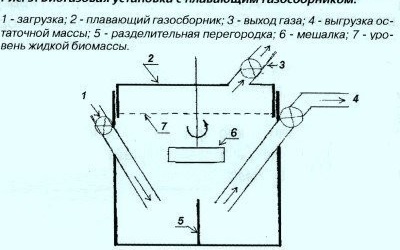
The design of the generator for biogas production is very simple, however, some care should be taken during its operation, since biogas is a combustible substance hazardous to health
The composition and amount of biogas obtained from waste depends on the substrate. Most gas is obtained by using fat, grain, industrial glycerin, fresh grass, silage, etc.Typically, a mixture of animal and vegetable waste is added to the tank, to which some water is added. In the summer, it is recommended to increase the humidity of the mass to 94-96%, and in the winter, 88-90% of moisture is sufficient. The water supplied to the waste tank should be heated to 35-40 degrees, otherwise the decomposition processes will be slowed down. To maintain heat, a layer of insulating material is mounted on the outside of the tank.
The use of biofuels (biogas)
The action of the heat pump is based on the inverse Carnot principle. This is a rather large and rather complex device that collects low-potential thermal energy of the environment and converts it into energy with high potential. Most often, heat pumps are used to heat rooms. The device consists of:
- external circuit with coolant;
- internal circuit with coolant;
- evaporator;
- compressor;
- capacitor.
The system also uses freon. The external circuit of the heat pump can absorb energy from various environments: earth, water, air. Labor costs for its creation depend on the type of pump and its configuration. The most difficult to arrange a pump of the type "ground-water", in which the outer contour is horizontally located in the thickness of the soil, because it requires large-scale excavation. If there is a pond near the house, it makes sense to make a water-water heat pump. In this case, the outer circuit is simply lowered into the pond.
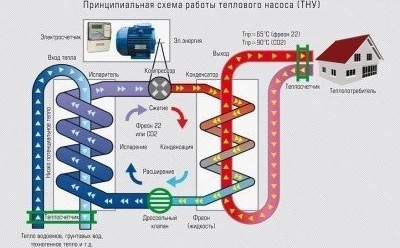
A heat pump converts low-potential energy of the earth, water or air into high-potential thermal energy, which allows heating the building quite efficiently
The efficiency of the heat pump depends not so much on how high the temperature of the medium, but on its constancy. A properly designed and installed heat pump can provide the house with enough heat in the winter, even at very low temperatures of water, land or air. In the summer, heat pumps can act as an air conditioner, cooling the home.
The advantages of these installations include:
- energy efficiency;
- fire safety;
- multifunctionality;
- long operation until the first overhaul.
The weaknesses of such a system are:
- high initial price in comparison with other methods of heating a building;
- requirement for the state of the power supply network;
- more noisy than a classic gas boiler;
- the need for drilling.
Video: how heat pumps work
Related Articles:
As you can see, in order to provide your home with heat and electricity, you can use solar energy, wind and water. Each of the methods has its advantages and disadvantages. Nevertheless, from all existing options, you can use the method, which will be both inexpensive and effective.
Material updated 01/30/2018
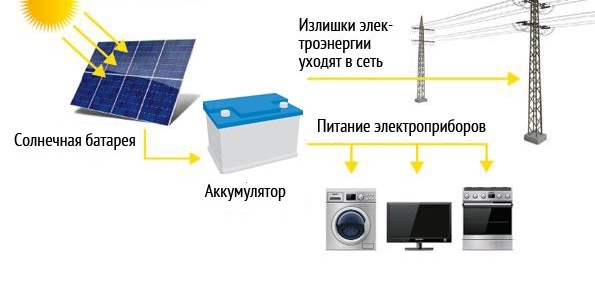
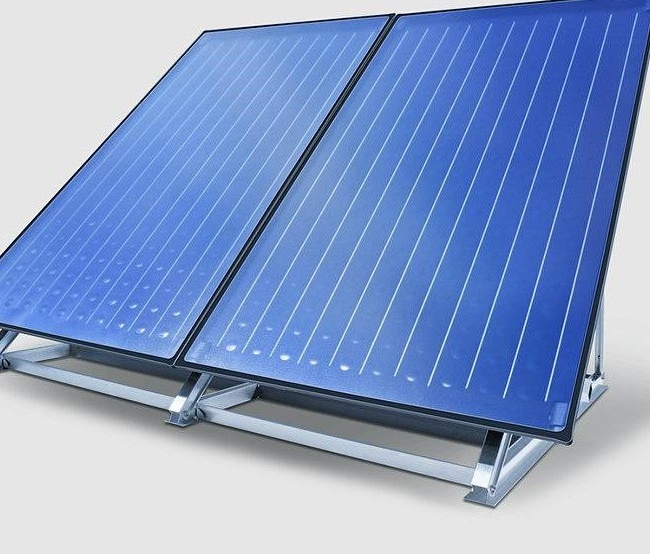
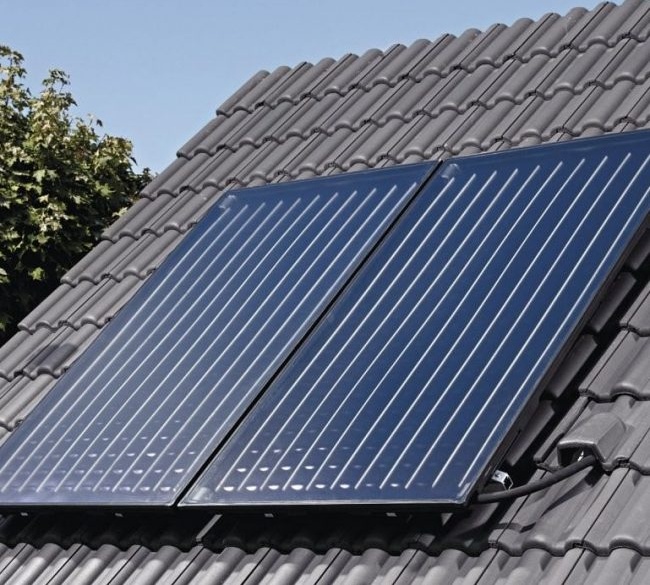
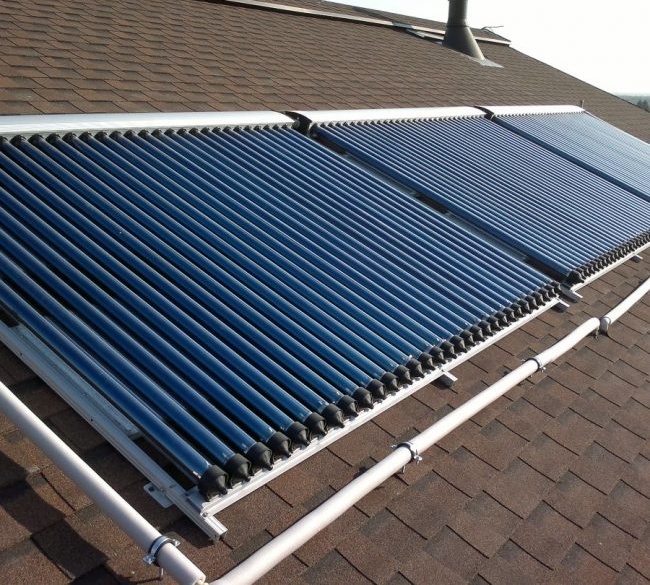

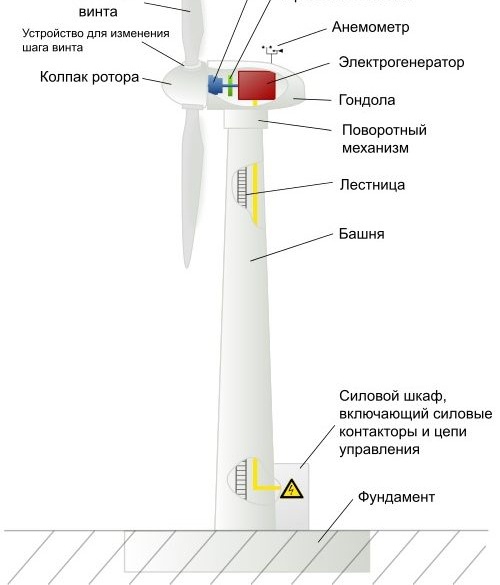

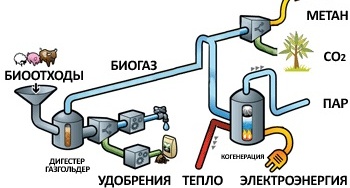
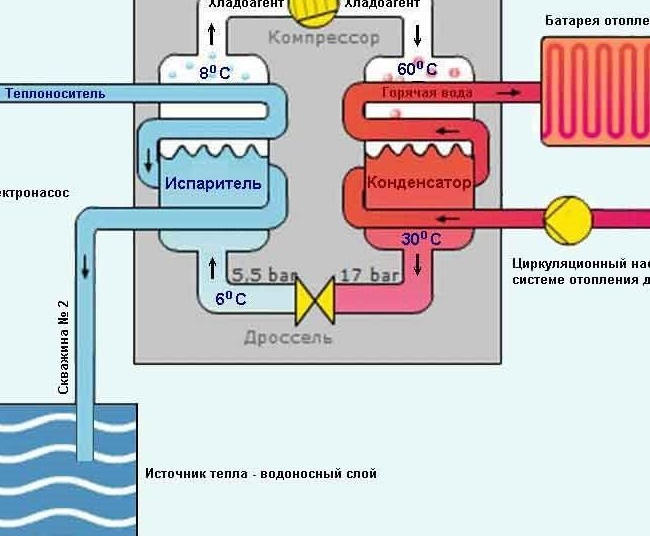

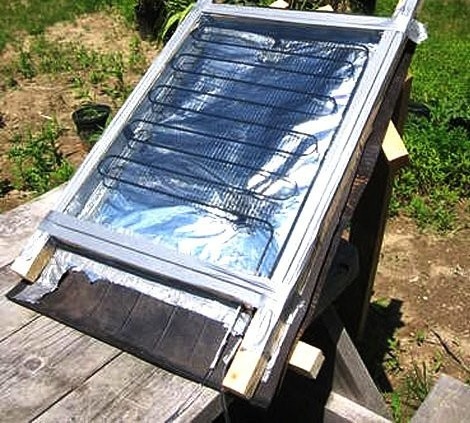

7 comments